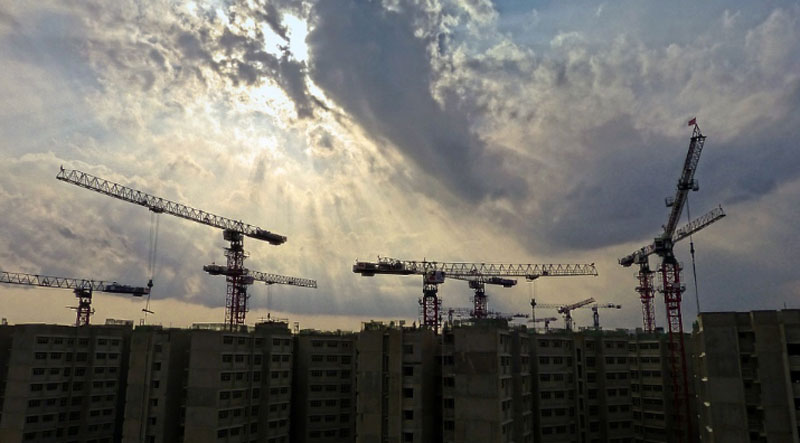
India needs to recycle its construction material waste on a war footing, says environmental body CSE
New Delhi/IBNS: Have you ever wondered what happens to all the waste material generated while demolishing and constructing buildings? How are the waste disposed of?
According to an analysis by the New Delhi based Centre for Science and Environment (CSE), India manages to recover and recycle only about one per cent of its construction and demolition (C&D) waste while the rest remain strewn across, in landfills, or in plain sight everywhere, leading to air and water pollution and other environmental damages.
Compare this with the Building Material Promotion Council’s (BMPTC’s) estimate that India generates 150 million tonnes of C&D waste every year.
A new analysis by the Centre for Science and Environment (CSE), released recently at a national online Round Table, has brought to light how the country is managing its C&D waste.
CSE director general Sunita Narain said, “Our study shows that as many as 53 cities were expected to set up recycling facilities to recover material from C&D waste by 2017 – but only 13 cities have done that by 2020.”
According to Narain, a significant proportion of construction waste can be recycled and reused and brought back to construction to substitute naturally sourced material.
“This demands a circular economy that can turn C&D waste into a resource. This can help reduce energy intensity and environmental footprints of buildings and infrastructure,” she said.
Anumita Roychowdhury, executive director-research and advocacy, CSE and the head of the Centre’s Sustainable Urbanisation programme, said, “Heaps of concrete, bricks and metal waste from construction are choking water bodies, green areas and public spaces in our cities. Toxic dust particles from the debris are polluting air, at a time when cities have to reduce their particulate pollution by 20-30 per cent by 2024, under the ongoing National Clean Air Programme (NCAP).”
CSE researchers point out that the sorry state of affairs exists notwithstanding the removal of legal hurdles to using recycled C&D material in construction.
The Bureau of Indian Standards (BIS) has allowed the use of concrete made from recycled material and processed C&D waste.
The Construction and Demolition Waste Rules and Regulations, 2016 have mandated reuse of recycled material.
The researchers pointed out that even the Swachh Bharat Mission has recognised the need for C&D waste management.
Ranking points for C&D waste management for Swachh Survekshan 2021 have been doubled to 100 points, divided equally between management infrastructure and waste processing efficiency.
Cities will need to have a C&D waste collection system in place; notified charges for C&D services; and segregation of waste in five streams.
Under waste processing efficiency criteria, ranking points will be awarded based on the percentage of collected waste that is processed and reused.
Said Roychowdhury, “This recognition by the Swachh Bharat Mission and the C&D Waste Rules offers an opportunity -- cities will need strong preparedness for this. Our new study has carried out a detailed analysis of the current C&D challenge as well as technical and regulatory barriers to implementation of the Rules. It has identified strategies needed to accelerate the implementation of the Rules and market uptake of recycled material. The analysis is supported by ground-reality checks in multiple cities.”
Support Our Journalism
We cannot do without you.. your contribution supports unbiased journalism
IBNS is not driven by any ism- not wokeism, not racism, not skewed secularism, not hyper right-wing or left liberal ideals, nor by any hardline religious beliefs or hyper nationalism. We want to serve you good old objective news, as they are. We do not judge or preach. We let people decide for themselves. We only try to present factual and well-sourced news.







